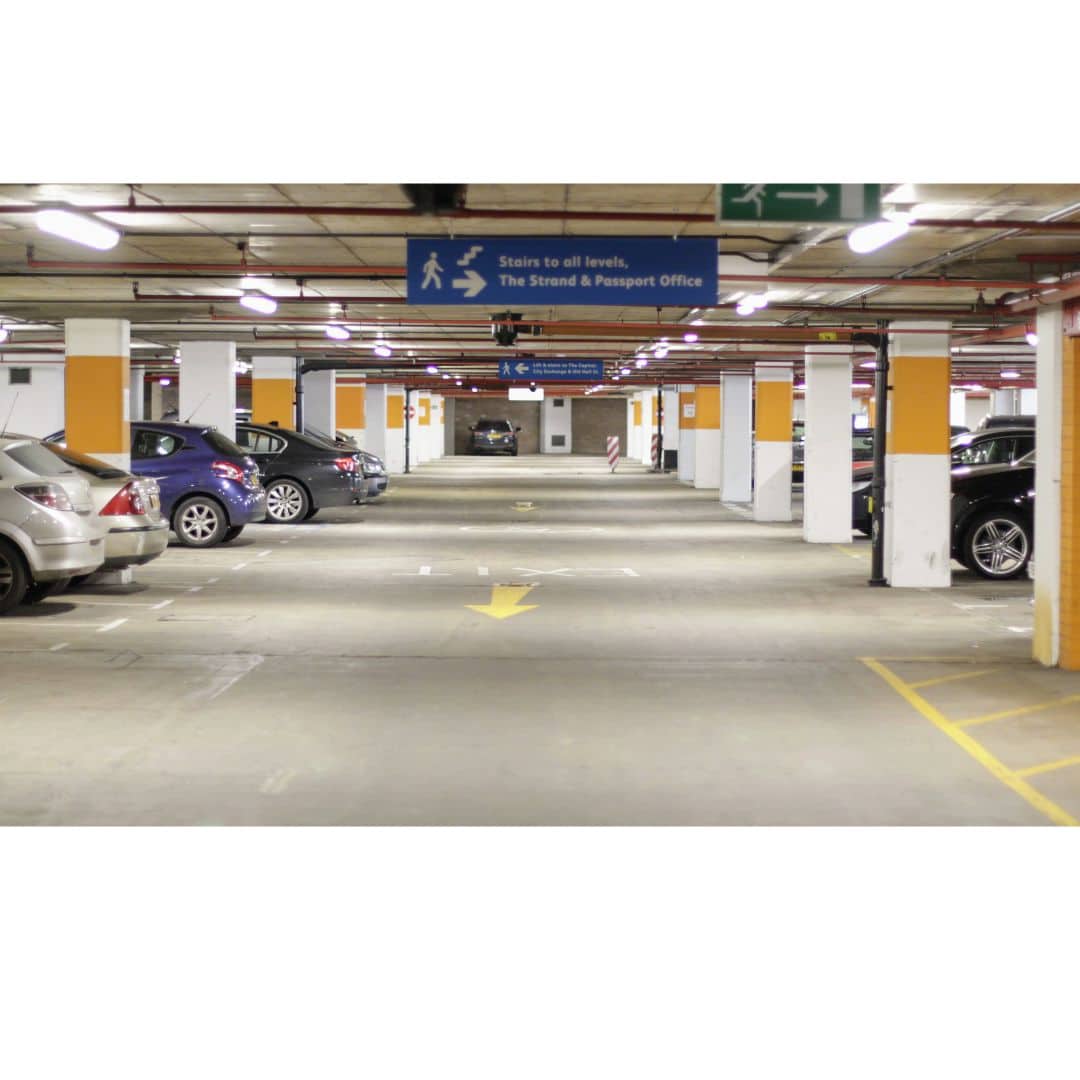

At Speed Humps Australia, we are committed to establishing settings that are safer for both drivers and pedestrians. We shall examine the vital function that speed humps perform in Australian parking lots in this blog post, highlighting its relevance in reducing speeding and subsequently raising safety. We will shed light on the efficiency of speed humps in lowering accidents and establishing a safer environment for all users of car parks across the country by looking at regional case studies and accident statistics. Join us as we examine the persuasive arguments for why speed bumps are an essential tool for encouraging responsible driving and safeguarding people’s safety in parking lots all around Australia.

Parking lots are necessary areas that can hold a lot of cars and people walking. Prioritizing safety in these parking lots is essential given the rising traffic in Australia. Speed humps are one practical measure that aids in achieving this objective. Speed humps are essential for reducing vehicle speeds, enhancing traffic flow, and maintaining pedestrian safety. Let’s look at the significance of speed humps in Australian parking lots and the different ways they improve safety and lower collisions.
Speed humps alter the road surface vertically to slow down moving cars. Speed humps are carefully positioned within parking lots to force drivers to slow down, reducing the possibility of accidents brought on by excessive speeding.
Drivers are discouraged from participating in risky behaviours like aggressive acceleration or abrupt lane changes by speed bumps, which serve as both physical and visual deterrents. Speed bumps promote more responsible and careful driving behaviours, making the road environment safer for everyone.
Speed humps help regulate traffic flow within car parks by enforcing slower speeds. This prevents congestion and improves the overall movement of vehicles, reducing the likelihood of collisions or near-miss incidents.
When drivers adhere to slower speeds due to the presence of speed humps, they have better control over their vehicles, resulting in smoother parking maneuvers. This improves the efficiency of parking operations and reduces the chances of accidental collisions between cars.

Speed bumps act as visual cues to identify designated pedestrian spaces in parking lots. Speed humps aid in the creation of safer settings for pedestrians to travel through without the risk of car-related accidents by clearly defining the difference between vehicle and pedestrian zones.
Drivers are prompted to become more aware of and attentive to their surroundings when there are speed humps present. Drivers are more likely to yield and put pedestrian safety first as they approach speed humps because they become more aware of the probable presence of pedestrians.
Traffic slows down as a result of speed bumps, providing drivers more time to respond to unforeseen circumstances or impediments. Drivers can safely negotiate the parking lot because of the improved reaction time, which lowers the possibility of accidents.
Speed humps act as a warning system for prospective hazards or obstructions such as sharp turns, intersections, and pedestrian crossings. Speed bumps reduce the chance of accidents by making these locations more visible and instilling caution in drivers.
Speed bumps are essential for increasing safety, streamlining traffic, and lowering accidents in Australian car parks. Speed humps help create pedestrian zones, slow down traffic, increase driver awareness, and reduce collisions, all of which make car parks safer and more effective. At Speed Humps Australia, we recognize the value of putting into place speed hump solutions that adhere to regional safety and legal requirements. Speed hump installations help us prioritize safety so that we can design car parks that are safe and comfortable.
At Speed Humps Australia, we prioritize the safety of drivers and pedestrians in car parks across the nation. There are wide-ranging benefits of speed humps in Australian car parks and speed humps play a pivotal role in preventing speeding and reckless driving, ensuring pedestrian safety, and enhancing traffic flow within car parks. By tackling these key aspects, we create a positive impact with speed humps fostering safer and more efficient driving environments.
Speed humps act as effective traffic calming devices, promoting reduced speeds among drivers. By introducing gradual changes in road elevation, speed humps compel motorists to slow down, minimizing the risk of accidents caused by excessive speed within car parks. The controlled reduction in speed also provides additional time for drivers to react to unexpected situations.
The likelihood of crashes and accidents in car parking areas is considerably increased by speeding and uncontrolled driving. Speed humps act as a physical deterrent that forces motorists to slow down and approach these areas with greater care. As a result, accidents become less often and less severe, making the parking area safer for everyone who uses it.
Speed humps are essential for identifying pedestrian-friendly locations in parking areas. They intentionally place speed humps close to pedestrian pathways and crossings to draw attention to pedestrians and urge vehicles to drive more cautiously. This increases pedestrian safety by lowering the chance of accidents and providing for their safe passage.
Drivers’ awareness levels are raised when speed humps are present. Drivers become more aware of their surroundings when they pass over speed humps, including the presence of people, other vehicles, and potential impediments. This greater awareness promotes safe driving practices and lowers the likelihood of collisions brought on by distracted or inattentive drivers.
Speed humps aid in controlling traffic speed and facilitating smoother vehicle movements within car parks. By enforcing reduced speeds, they help regulate the flow of vehicles, preventing congestion, and reducing the likelihood of abrupt stops or sudden lane changes. This results in a more organized and efficient traffic flow, improving overall accessibility and reducing potential conflicts between vehicles.
Speed humps serve as visual indicators of designated traffic lanes and routes within car parks. They guide drivers by delineating proper pathways and discouraging shortcuts or unauthorized maneuvers. This promotes orderly driving behaviour, reducing the chances of confusion and enhancing the overall traffic management within car parks.
Speed humps offer comprehensive benefits within Australian car parks, including the prevention of speeding and reckless driving, ensuring pedestrian safety, and enhancing traffic flow and organization. By actively encouraging responsible driving bbehavioursand prioritizing the well-being of all car park users, speed humps contribute to safer and more efficient driving environments. At Speed Humps Australia, we remain committed to implementing effective speed hump solutions that create secure and smoothly-operating car parks across the country.
We can explore the effectiveness of speed humps in Australian car parks by examining local case studies and analyzing accident statistics, these highlight the tangible impact of speed humps on reducing accidents and enhancing safety within car parks across the country. This is why speed humps are an invaluable tool in creating safer driving environments.
In this case study, we investigate the installation of speed humps at a busy shopping center car park. By closely monitoring vehicle speeds before and after the implementation of speed humps, we observe a significant decrease in speeding incidents. The presence of speed humps acts as a visual and physical reminder for drivers to reduce their speed, resulting in a safer environment for shoppers and pedestrians.
This case study examines a hospital parking lot that experienced a high number of pedestrian-vehicle accidents. Following the installation of speed humps, there was a noticeable reduction in such accidents. Speed humps create designated pedestrian zones and encourage drivers to exercise caution and be more alert, thereby minimizing the risk of collisions and ensuring the safety of pedestrians accessing healthcare facilities.
By analyzing national accident statistics, we gain insights into the prevalence and severity of accidents within car parks. The data reveals a significant number of accidents, often resulting from speeding, reckless driving, or inattentiveness. Speed humps address these issues by effectively reducing speeds and increasing driver awareness, thereby contributing to a decrease in the number of accidents and their severity.
Studies have consistently shown that the implementation of speed humps in car parks leads to a reduction in accident rates. Speed humps act as traffic calming measures, forcing drivers to slow down and navigate with greater care. This decrease in vehicle speed significantly reduces the probability of collisions and improves overall safety within car parks.
To guarantee the continuous efficiency of speed humps, regular monitoring and evaluation are essential. Operators of car parking areas should evaluate how speed humps affect traffic patterns and accident rates to determine any changes or enhancements that are required. Speed hump tactics may be continuously improved and optimised because of this proactive approach.
Technology advancements present fresh possibilities for improving the efficiency of speed humps. For instance, the combination of speed detection technology with intelligent traffic management systems can produce automated notifications for excessive speeding as well as real-time statistics on vehicle speeds. This connection enables more focused enforcement initiatives and guarantees that speed humps will continue to successfully discourage speeding behaviours.
Speed humps are a proven safety measure in Australian parking lots. We have seen the beneficial effects that speed humps have on lowering speeding incidents, preventing accidents, and improving general safety through local case studies and accident statistics. As road safety is a top priority for Speed Humps Australia, we promote the installation and ongoing monitoring of speed humps in parking lots all across the nation. We can improve driving conditions and ensure everyone using these parking areas are safer by implementing this practical traffic solution.
In order to promote safer driving conditions, well-designed speed humps are essential. Effective speed humps must take into account a number of design factors while being installed in Australian car parks. These include speed humps that are appropriately constructed to maximise efficacy and improve safety and traffic flow, as well as those with the ideal proportions, positioning, and spacing.
The efficiency of speed humps depends on choosing the right proportions. The ideal height, which is normally between 50mm and 75mm, makes sure that cars slow down without upsetting the passengers or risking damage to the cars. Speed hump width and length should be precisely calculated to give vehicles a regulated and smooth transition, minimising any violent jolts or impacts.
The pertinent Australian Standards must be followed when installing speed humps. These specifications provide precise requirements for speed hump parameters, such as height, width, and slope. The owners of car parks can make sure the speed humps are safe and work consistently by adhering to these criteria.
Speed hump placement must be carefully considered in order for it to be effective. Speed humps should be placed in high-risk areas, such as close to pedestrian crossings, intersections, or places with poor visibility, to regulate vehicle speeds. By installing speed humps in these areas, you may urge cars to drive carefully and lower the likelihood of accidents.
A safe and comfortable driving experience depends on the distance between speed humps. Vehicles may comfortably cross one speed hump before coming across the next thanks to adequate spacing, which helps to minimise disturbances to traffic and ensures easy movement through the parking area. To ensure accessibility and avoid conflicts, consideration should also be given to the distance between speed humps and other infrastructure components, such as kerbs, ramps, or parking spots.
To ensure the strength and efficacy of speed humps, it is essential to choose the right materials. High-quality materials provide durability to handle severe traffic loads and diverse weather conditions, such as rubber, asphalt, or reinforced concrete. The materials should also have enough traction to stop sliding or skidding, protecting both automobiles and people.
In order to guarantee the longevity and functionality of speed humps, proper installation methods are essential. In order to resist numerous vehicle movements without moving or being knocked loose, they should be firmly attached to the ground. To avoid water buildup and ensure the speed humps’ long-term integrity, suitable drainage considerations should also be made during installation.
Effective speed hump designs in Australian car parks necessitate careful attention to crucial factors such as ideal proportions, optimum placement and spacing, as well as suitable materials and building methods. Operators of car parks may install speed humps that efficiently regulate vehicle speeds, improve safety, and encourage efficient traffic flow by using these design ideas. In order to maximise the efficiency of speed humps and provide safer driving situations for all car park users, we at Speed Humps Australia place a high value on thoughtful design.
There are various misconceptions and concerns surrounding the use of speed humps in car parks. By dispelling misconceptions related to noise, vehicle damage, emergency response times, and accessibility, we can realize the benefits and practicality of speed humps in Australian car parks.
One of the common concerns about speed humps is the noise they generate when vehicles traverse them. However, properly designed and installed speed humps should not produce excessive noise. By adhering to Australian Standards and utilizing appropriate materials, such as rubber or asphalt, noise levels can be minimized. Additionally, speed humps can be strategically located away from residential areas to further mitigate noise concerns.
Another misconception is that speed humps cause damage to vehicles, particularly to their suspension systems. When designed and implemented correctly, speed humps pose no significant risk of vehicle damage. Adhering to proper design guidelines, including the recommended dimensions, profiles, and materials, ensures a smooth and controlled transition for vehicles. Furthermore, regular maintenance and inspections of speed humps can address any potential issues and ensure their optimal functionality.

Concerns often arise regarding the impact of speed humps on emergency response times. However, emergency services are well-equipped to navigate speed humps efficiently. Through effective communication between car park operators and emergency service providers, speed humps can be strategically placed and designed to accommodate emergency vehicles without compromising safety. Speed humps can be constructed with gentle profiles or equipped with bypass lanes, allowing emergency vehicles to maintain their response times while ensuring overall safety within the car park.
Some individuals express concerns that speed humps may impede accessibility for individuals with mobility challenges. However, proper consideration during the design phase can address these concerns. By incorporating accessible ramps, ensuring appropriate widths, and adhering to accessibility guidelines, speed humps can coexist with accessible pathways and parking spaces. Car park operators should prioritize inclusive design to accommodate all users and maintain accessibility standards.
Open communication and cooperation between parking facility managers, traffic engineers, and stakeholders are essential to addressing any worries or misconceptions about speed humps. Concerns can be addressed and solutions to reduce any possible problems can be put into place by participating in discussions and exchanging correct information. This cooperative approach enables the creation of customised speed hump solutions that satisfy the unique needs and specifications of each parking structure.
We seek to provide clarity and correct information on speed humps in Australian car parks by dispelling widespread myths and resolving concerns. When correctly planned and put into place, speed humps provide substantial advantages in terms of increased safety, decreased speeding, and improved traffic flow. In order to ensure the efficient and useful application of this crucial traffic management tool, Speed Humps Australia is still dedicated to fostering a greater understanding of speed humps and fostering open discussion. Let’s collaborate to design parking lots that are safer and more effective for all users.
Collaboration between traffic engineers, parking facility owners, governmental entities, and other stakeholders is necessary to implement effective traffic solutions. A lot of legislation and cooperative efforts are currently being made to advance the installation of speed humps in Australian car parks. We stress the value of cooperating to build safer and more effective driving conditions by emphasising the advantages of doing so, talking about how laws establish standards, and providing successful instances.
Implementing a speed hump successfully requires involving the appropriate parties, such as car parking facility managers, traffic engineers, local government officials, and residents. Collaboration makes it possible to share ideas, pinpoint specific needs, and align goals, which results in well-informed decisions and successful execution techniques.
Successful collaboration depends on clear lines of communication and substantive consultation. During the planning and execution phases, issues and important insights can be addressed by requesting input from a variety of stakeholders, such as car park users and neighbouring households. This cooperative method encourages transparency, creates confidence, and makes sure that speed hump solutions satisfy the particular needs of each parking lot.
In order to create standards for speed hump design, placement, and installation, laws and regulations are essential. Australian Standards offer helpful advice on speed hump dimensions, profiles, and other design considerations, such as AS/NZS 2890.1:2020 (Parking Facilities – Off-street Car Parking). The use of speed humps in Australia’s parking lots is consistent, safe, and efficient when certain guidelines are followed.
The regulation and enforcement of speed hump deployment under local government agencies’ purviews are crucial. Authorities can address particular area requirements and concerns while guaranteeing compliance with national standards by creating and enforcing local laws. To successfully implement speed hump measures and comply with local laws, cooperation between parking lot proprietors, traffic engineers, and local government authorities is crucial.
This case study shows how a retail district, the local administration, and traffic engineers worked together to enhance safety and traffic flow. With consideration for pedestrian safety, vehicle movement, and accessibility, the stakeholders identified essential places for speed hump installation through open discussion. The end product was a carefully thought out and efficient speed hump system that addressed issues and improved general safety within the retail sector.
Through educational efforts, open forums, and feedback mechanisms, the community can be encouraged to take ownership and knowledge of the deployment of speed humps. Car park managers and traffic engineers can create a cooperative climate that fosters acceptance and support for speed hump projects by including the community in the decision-making process and resolving their concerns.
In conclusion, installing speed humps in Australian parking lots has several advantages for user experience, traffic management, and safety. In our research at Speed Humps Australia, we have looked at the many benefits that speed humps may provide, including reducing the likelihood of accidents, preventing speeding and reckless driving, assuring pedestrian safety, improving visibility and awareness, and preventing pedestrian injury. Car park managers may create settings that are safer and more successful for both drivers and pedestrians by deploying speed humps efficiently.
Speed humps are essential for regulating vehicle speeds in parking lots and reducing the likelihood of crashes and accidents. Car park operators can successfully slow down vehicles, encouraging drivers to exercise caution and be aware, by strategically putting speed humps in high-risk zones and adhering to proper dimensions and profiles. This, in turn, greatly lowers the likelihood of accidents and encourages everyone to drive more safely.
Speed humps also help to ensure pedestrian security in car parks. Speed humps efficiently signal the presence of pedestrians and incentivize drivers to drive more cautiously and attentively by providing designated pedestrian zones and clearly separating vehicle and pedestrian regions. This makes parking areas far more pedestrian-friendly and reduces the chance of accidents while also improving the overall pedestrian experience.
Speed humps improve visibility and alertness in parking areas by highlighting potential dangers or obstructions. Their distinctive placement and profile warn drivers to take it slow and pay attention to their surroundings. This raised awareness encourages defensive and conscientious driving, which lowers the possibility of crashes and close calls. Additionally, speed humps can act as visible cues for drivers to follow the set speed restrictions inside the car park, thus making the area safer for everyone.
Car park managers and traffic engineers need to take a number of design factors into account to guarantee the speed humps are working as efficiently as possible. This involves choosing the best proportions, abiding with pertinent Australian Standards, putting speed humps at strategic locations, and choosing appropriate materials and building methods. Operators of parking lots can design speed humps that are reliable, sturdy, and in compliance with safety regulations by following these recommendations.
It’s critical to dispel prevalent myths and worries about speed humps in car parks. We can provide precise information and clear up any misconceptions by dispelling myths about loudness, vehicle damage, emergency response times, and accessibility. Implementing efficient speed hump solutions requires cooperation amongst stakeholders, including car park operators, traffic engineers, governmental organisations, and the community. Speed humps are developed and put in a way that prioritises safety and accessibility while taking into account the unique requirements of each parking facility. This is done through open communication, consultation, and adherence to laws and standards.
In order to implement practical speed hump solutions, we at Speed Humps Australia are dedicated to encouraging cooperation, supporting legislation, and collaborating with stakeholders. Our ability to create customised speed hump solutions that maximise safety and traffic flow is made possible by our expertise in traffic engineering and understanding of local requirements. We contribute to safer neighbourhoods and better overall mobility experiences by building safer parking areas.
Contact Speed Humps Australia right now if you are a stakeholder or a parking facility operator wishing to improve the security and effectiveness of your car park. Our team of skilled traffic engineers can help you create and put into place efficient speed hump solutions that satisfy your unique requirements and adhere to pertinent laws. Let’s work together to make parking lots safer and easier to utilise for everyone.
To advance the installation of speed humps in Australian car parks, collaborative efforts and legislation are essential. We can make driving environments safer and more effective by involving stakeholders, encouraging open communication, and upholding laws and standards. We highlight the beneficial effects that cooperative efforts can have on strengthening safety and improving traffic flow through successful instances and community engagement projects. Let’s keep pushing for improvement and establishing safer environments for everyone.
At Speed Humps Australia, we are committed to helping local authorities with their efforts to improve road safety. Our selection of top-notch speed humps and traffic calming solutions may successfully lower vehicle speeds, encourage cautious driving, and make roads safer. Local authorities can improve their road safety programmes by teaming with Speed Humps Australia to take advantage of our knowledge and creative ideas.
In conclusion, Australian local councils’ successful implementation of road safety policies sets an encouraging model for other councils to imitate. Local councils may significantly improve the safety of their neighbourhoods and streets by prioritising road safety, putting good plans into place, and implementing creative solutions. Speed Humps Australia is dedicated to helping local authorities achieve the highest standards in traffic safety and to offering the finest solutions to make all roads safer for everyone. Let’s work together to create a future with safer roads and fewer accidents in Australia.
Get in touch with us today to seek a quote or to explore how we can help with offering a bespoke solution to your particular project requirements since our design and production are both handled internally and distributed throughout Australia.



For 10 years, our focus has been on one thing: to provide one style of product and to do it well.
Our wheel stops, speed humps and rumble bars meet Australian Standards, don’t fade, and we’ve never needed to replace one.

For 10 years, our focus has been on one thing: to provide one style of product and to do it well.
Our wheel stops, speed humps and rumble bars meet Australian Standards, don’t fade, and we’ve never needed to replace one.